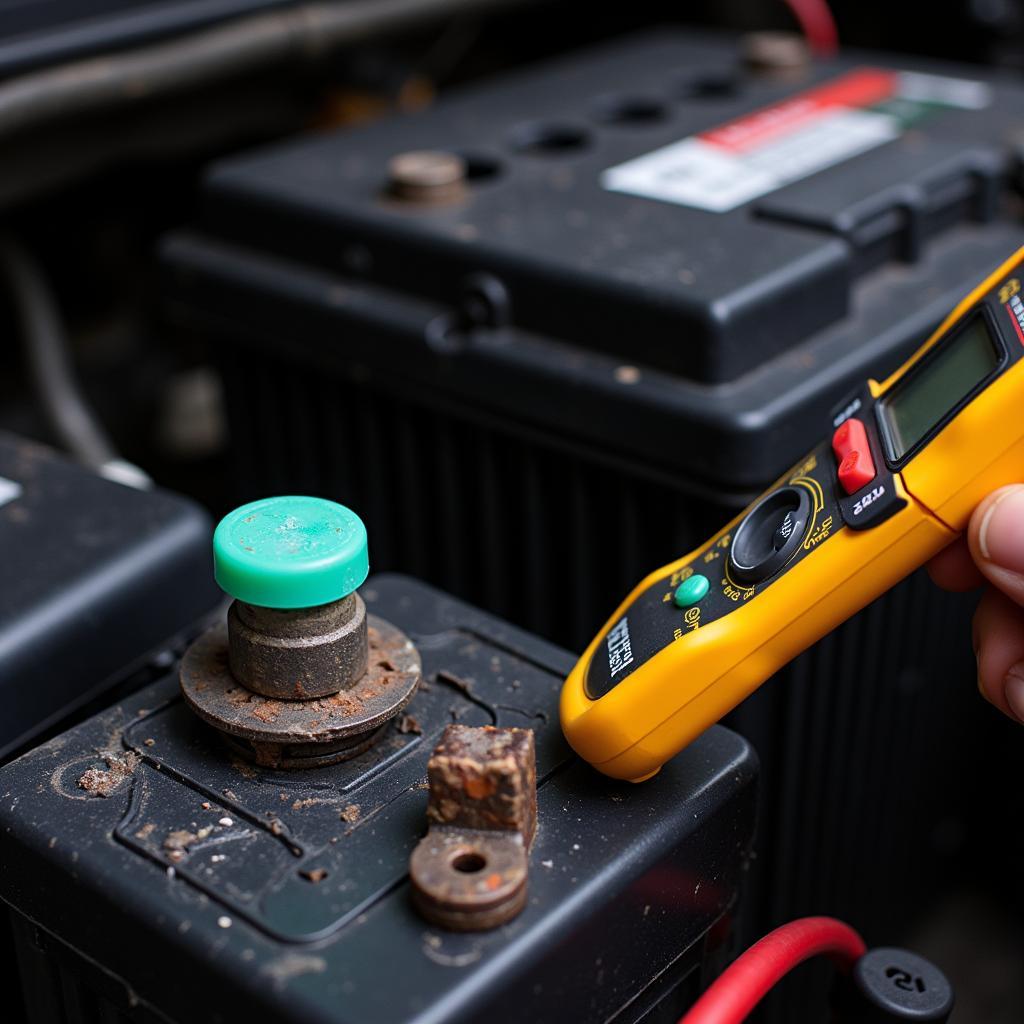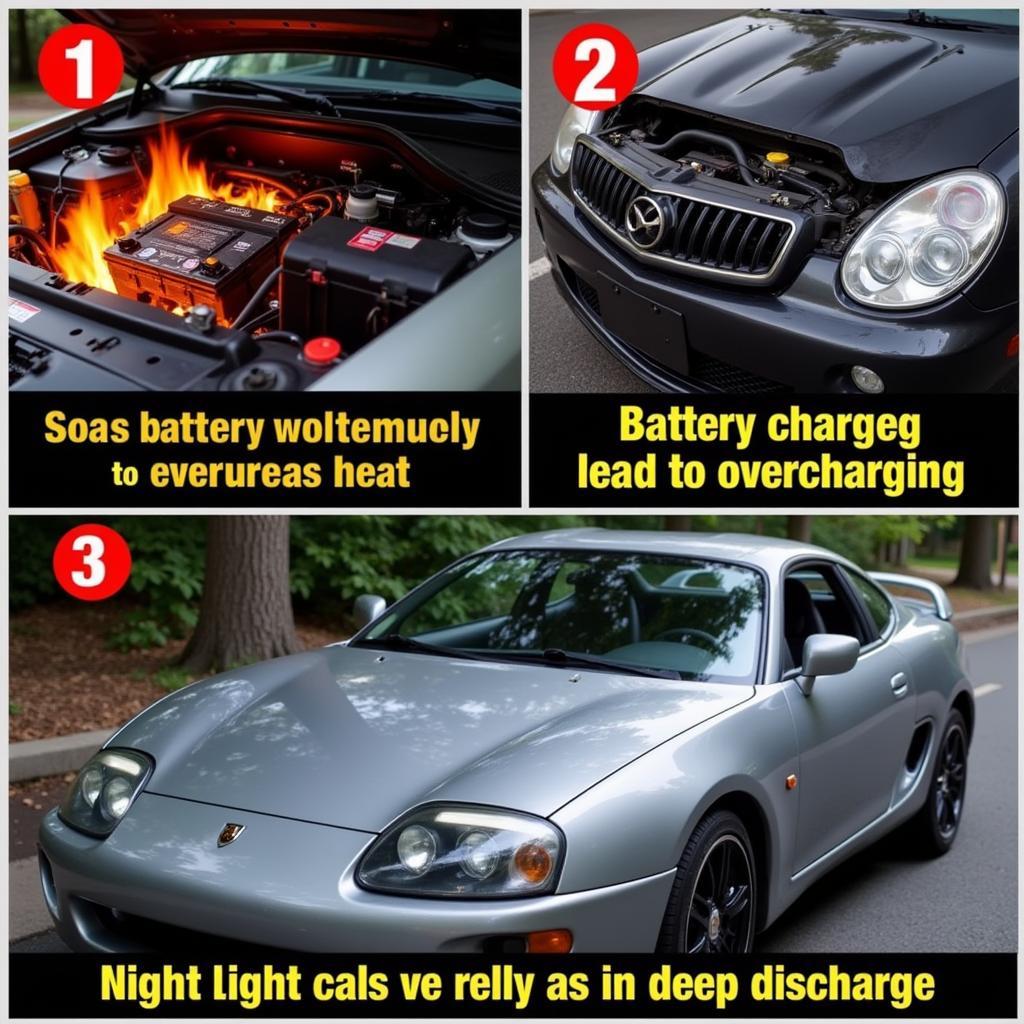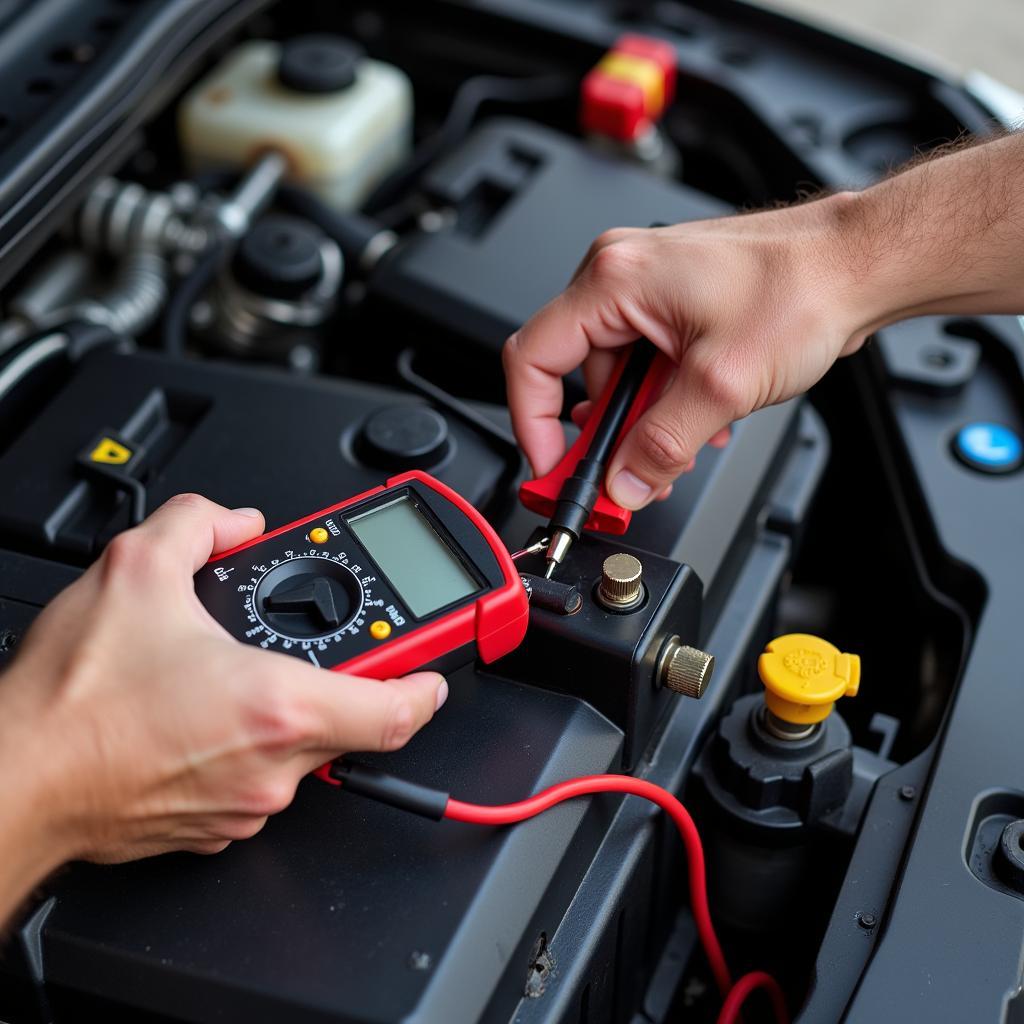A failing battery cell can cause all sorts of problems, from a slow crank to complete vehicle failure. Knowing the signs of a bad battery cell is crucial for maintaining your vehicle’s performance and avoiding unexpected breakdowns. This article will delve into the common indicators of a failing battery cell, diagnostic techniques, and potential solutions.
Recognizing the Signs: Is Your Battery Cell Failing?
 Signs of a Bad Battery Cell: Reduced Performance, Slow Cranking, and Warning Lights
Signs of a Bad Battery Cell: Reduced Performance, Slow Cranking, and Warning Lights
Several symptoms can point towards a faulty battery cell. One of the most obvious signs is a slow crank. If your engine struggles to turn over, particularly in cold weather, a weak battery cell could be the culprit. Another common indicator is dimmed headlights and interior lights, especially when the engine isn’t running.
Further signs include a swollen or leaking battery case, a distinctive rotten egg smell (hydrogen sulfide), and the illumination of the battery warning light on your dashboard. Experiencing reduced fuel economy can also be linked to a bad battery cell, as the other components work harder to compensate.
Diagnosing the Problem: Pinpointing the Faulty Cell
Identifying a bad battery cell requires a systematic approach. A simple voltage test using a multimeter can reveal if the battery is holding a charge. A healthy 12-volt battery should read around 12.6 volts when the engine is off. However, a lower reading could indicate a failing cell.
More advanced diagnostic tools, like battery testers and load testers, can provide a more comprehensive assessment of the battery’s health. These tools can measure the internal resistance of each cell, pinpointing the faulty one. Modern vehicles often have onboard diagnostic systems that can detect battery issues.
What Causes a Bad Battery Cell?
 Factors Contributing to Battery Cell Failure: Extreme Temperatures, Overcharging, and Deep Discharges
Factors Contributing to Battery Cell Failure: Extreme Temperatures, Overcharging, and Deep Discharges
Several factors contribute to premature battery cell failure. Extreme temperatures, both hot and cold, can accelerate the degradation of the battery’s internal components. Overcharging, due to a faulty alternator or voltage regulator, can also damage the cells. Conversely, deep discharges, like leaving the headlights on overnight, can also shorten the lifespan of a battery cell.
Solutions and Prevention: Keeping Your Battery Healthy
Replacing the entire battery is often the most practical solution. While individual cell replacement is sometimes possible, it’s generally more complex and less cost-effective, especially with modern sealed batteries. Preventative maintenance, such as regular battery testing and cleaning the terminals, can extend the life of your battery. Ensuring your charging system is functioning correctly is also essential.
How do I test for a bad battery cell?
A multimeter can provide a basic voltage reading, while a battery tester can analyze individual cell health.
Can a single bad cell affect the whole battery?
Yes, a single bad cell can compromise the performance and lifespan of the entire battery.
“Regular battery maintenance, including cleaning terminals and checking the charging system, is crucial for preventing premature battery cell failure,” says John Smith, Senior Automotive Electrical Engineer at Acme Auto Solutions.
How long does a car battery usually last?
Car batteries typically last between three and five years, but factors like climate and driving habits can impact their lifespan.
“Extreme temperatures can significantly impact battery life. Make sure to check your battery more frequently during hot summers and cold winters,” advises Maria Garcia, Lead Diagnostic Technician at Global Auto Diagnostics.
Can I replace a single bad battery cell?
While possible in some cases, replacing the entire battery is often the more practical and cost-effective solution.
Is a slow crank always a sign of a bad battery cell?
While a slow crank can indicate a bad battery cell, it can also be caused by other issues like a faulty starter motor or low engine oil.
What should I do if my battery warning light comes on?
If your battery warning light illuminates, have your vehicle’s charging system inspected by a qualified technician as soon as possible.
In conclusion, recognizing the signs of a bad battery cell is essential for maintaining your vehicle’s reliability. Regular maintenance and prompt diagnosis can help prevent unexpected breakdowns and costly repairs. By understanding the causes of battery cell failure and taking preventative measures, you can keep your car running smoothly and avoid the frustration of a dead battery.



